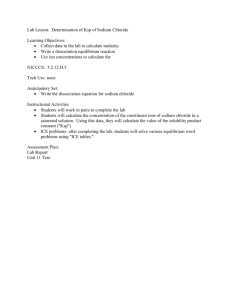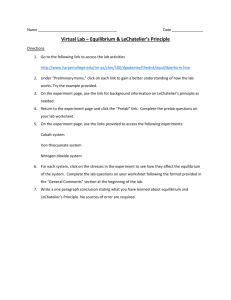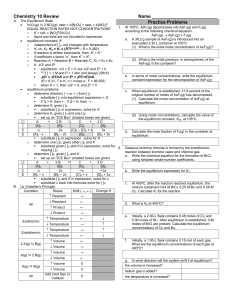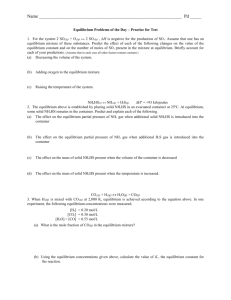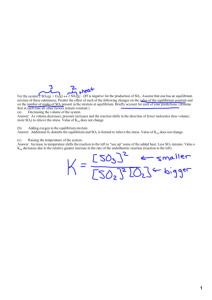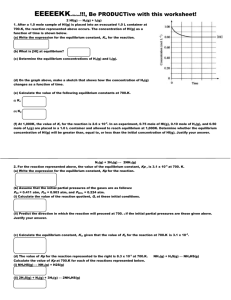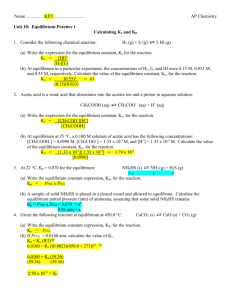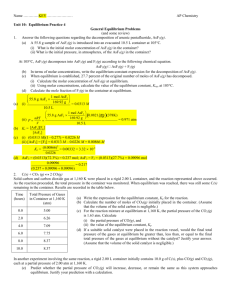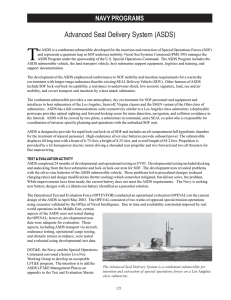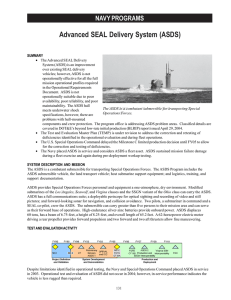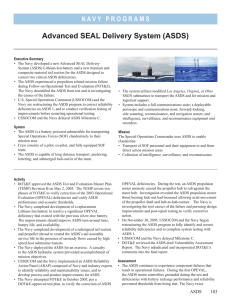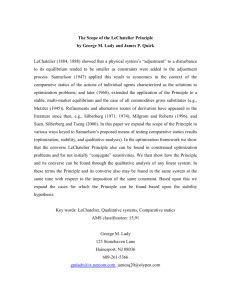KEY
advertisement
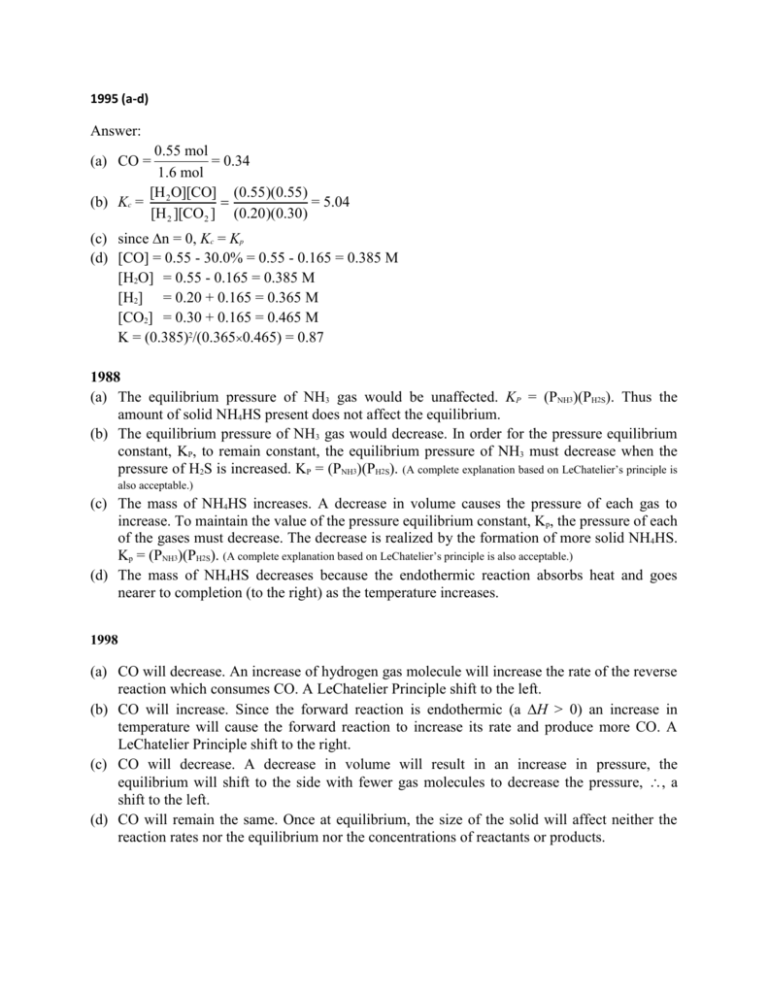
1995 (a-d) Answer: 0.55 mol = 0.34 1.6 mol [H O][CO] (0.55)(0.55) (b) Kc = 2 = 5.04 [H 2 ][CO 2 ] (0.20)(0.30) (a) CO = (c) since n = 0, Kc = Kp (d) [CO] = 0.55 - 30.0% = 0.55 - 0.165 = 0.385 M [H2O] = 0.55 - 0.165 = 0.385 M [H2] = 0.20 + 0.165 = 0.365 M [CO2] = 0.30 + 0.165 = 0.465 M K = (0.385)2/(0.3650.465) = 0.87 1988 (a) The equilibrium pressure of NH3 gas would be unaffected. KP = (PNH3)(PH2S). Thus the amount of solid NH4HS present does not affect the equilibrium. (b) The equilibrium pressure of NH3 gas would decrease. In order for the pressure equilibrium constant, KP, to remain constant, the equilibrium pressure of NH3 must decrease when the pressure of H2S is increased. KP = (PNH3)(PH2S). (A complete explanation based on LeChatelier’s principle is also acceptable.) (c) The mass of NH4HS increases. A decrease in volume causes the pressure of each gas to increase. To maintain the value of the pressure equilibrium constant, Kp, the pressure of each of the gases must decrease. The decrease is realized by the formation of more solid NH4HS. Kp = (PNH3)(PH2S). (A complete explanation based on LeChatelier’s principle is also acceptable.) (d) The mass of NH4HS decreases because the endothermic reaction absorbs heat and goes nearer to completion (to the right) as the temperature increases. 1998 (a) CO will decrease. An increase of hydrogen gas molecule will increase the rate of the reverse reaction which consumes CO. A LeChatelier Principle shift to the left. (b) CO will increase. Since the forward reaction is endothermic (a H > 0) an increase in temperature will cause the forward reaction to increase its rate and produce more CO. A LeChatelier Principle shift to the right. (c) CO will decrease. A decrease in volume will result in an increase in pressure, the equilibrium will shift to the side with fewer gas molecules to decrease the pressure, , a shift to the left. (d) CO will remain the same. Once at equilibrium, the size of the solid will affect neither the reaction rates nor the equilibrium nor the concentrations of reactants or products. 2003 B (c) 2008 Answer: 1 mol AsF5 55.8 g AsF5 169.92 g (a) (i) = 0.0313 M 10.5 L 1 mol AsF5 Lgatm 55.8 g AsF5 0.0821 molgK (378K) 169.92 g nRT (ii) P = 0.971 atm V 10.5 L [AsF3 ][F2 ] (b) Kc = [AsF5 ] (c) (i) (0.0313 M)(1 - 0.277) = 0.0226 M (ii) [AsF3] = [F2] = 0.0313 M – 0.0226 M = 0.00866 M (0.00866)2 Kc = = 0.00332 = 3.32 10-3 0.0226

